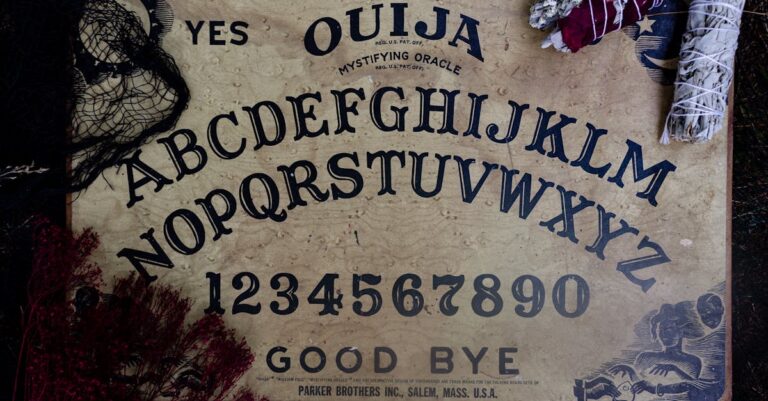
The air in the sublevel lab tasted metallic, like rusted pipes and static. Dr. Elara Voss adjusted her gloves, her breath fogging the visor of her suit. The device before her pulsed faintly, a black obelisk no taller than a child, its surface rippling as if submerged in water. It had been recovered from the Arctic ice two weeks prior, encased in a frozen lake that should not have existed. The military had called it a “disruption.” The scientists called it a puzzle. Elara called it a door.
“You sure about this?” Agent Kline’s voice crackled through the comms, dry and clipped. He stood in the observation booth above, his shadow a jagged silhouette against the flickering fluorescent lights. His presence was a reminder of the chain of command, the bureaucracy that had hounded her since the moment the artifact was pulled from the ice.
Elara didn’t answer. She had no need. The device responded to her touch, a low hum vibrating through her bones as she pressed a palm against its surface. The air thickened, then thinned, as if the room itself were holding its breath. Her fingers tingled, a sensation like needles crawling beneath her skin. She leaned closer, her breath shallow, and saw it—a fracture in the obelisk’s core, a spiral of light that seemed to stretch infinitely.
“It’s… reacting,” she said, more to herself than Kline. The words felt inadequate. The spiral pulsed in time with her heartbeat, and for a moment, she swore she could hear a sound—a whisper, or maybe the echo of one. It was not a voice, but it was close enough to make her pulse quicken.
Kline’s voice sharpened. “We don’t know what it’s reacting to. You’re not authorized to—”
“I’m the only one who can do this,” Elara interrupted, her tone flat. She didn’t wait for his response. The spiral expanded, swallowing the space between her and the obelisk. Her vision blurred, then cleared to reveal a landscape she did not recognize: a sky of shifting colors, trees that bent like reeds in a storm, and a horizon that seemed to fold inward. The air here was warmer, heavier, carrying the scent of damp earth and something else—something sweet and rotting.
“Elara?” Kline’s voice was distant now, as if filtered through water. “What the hell are you seeing?”
She turned, but there was nothing behind her but the obelisk, its surface now smooth and unbroken. The landscape had vanished, leaving only the hum of machinery and the acrid smell of ozone. Her hands trembled as she pulled them away from the device. “It’s not a door,” she said quietly. “It’s a mirror.”
Kline’s laugh was bitter. “A mirror? You’re telling me this thing shows us ourselves?”
“Not us,” she corrected. “Something else. Something… watching.” She stepped back, her boots crunching on the tile floor. The obelisk remained still, but she could feel it now, a presence that had always been there, waiting.
Over the next week, the anomalies escalated. Lights flickered in perfect rhythm with her heartbeat. Her coffee cooled faster than it should. The security cameras captured static-filled footage of a figure that wasn’t there. Elara documented everything, her notes filled with sketches of the spiral and equations that made no sense. She stopped sleeping, her days blurring into nights as she pored over data, searching for patterns.
One evening, she found a message scrawled in red ink on the lab’s whiteboard: “It’s not a mirror. It’s a hunger.” The handwriting was hers, but the tone was wrong—harsher, more desperate. She erased it, but the next morning it was back, along with a new line: “You let it in.” The words made her stomach twist. She hadn’t written them. She didn’t know how they’d gotten there.
Kline grew restless. He demanded she shut down the experiment, but Elara refused. “This is why we’re here,” she said, her voice steady. “To understand. To ask the questions no one else has the courage to ask.”
“And what if the questions aren’t meant to be asked?” he shot back. “What if this thing is a trap?”
She didn’t answer. She couldn’t. The obelisk had become a part of her, its presence a constant hum in her thoughts. She began to dream in spirals, in colors that didn’t exist, in voices that whispered her name. Sometimes, she woke up with her hands covered in ash, unsure if it was from the lab or something else entirely.
The final experiment was unplanned. One night, as she stood before the obelisk, she reached out not with her hands but with her mind. The spiral flared, and this time, she didn’t see a landscape. She saw herself—her face, her eyes, but older, wearier, and filled with something she couldn’t name. The reflection smiled, and for a moment, she felt a rush of warmth, of connection. Then the mirror shattered.
The lab exploded in light. Elara was thrown back, her ears ringing. When she opened her eyes, the obelisk was gone. In its place stood a figure, tall and thin, its face obscured by a mask of shifting patterns. It raised an arm, and the air around it rippled like water.
“You asked,” the figure said, its voice a chorus of overlapping tones. “Now you must answer.”
Elara’s breath caught. She wanted to run, but her legs wouldn’t move. The figure stepped forward, and she saw it now—not as a monster, but as a reflection of everything she had become. The hunger, the curiosity, the need to know. It was her, and it was something more.
“What do you want?” she managed to ask.
The figure tilted its head. “To be seen.” It extended a hand, and the room dissolved into darkness. Elara felt herself falling, not down, but inward, into the spiral that had always been there, waiting. She didn’t know if she would ever come back. But for the first time in her life, she wasn’t afraid.
The lab was empty when Kline returned. The obelisk was gone. The whiteboard was clean. The only thing left was a single line of red ink, scrawled in her handwriting: “I understand.” He stared at it for a long time, then turned and walked away, the sound of his boots echoing through the silence.


